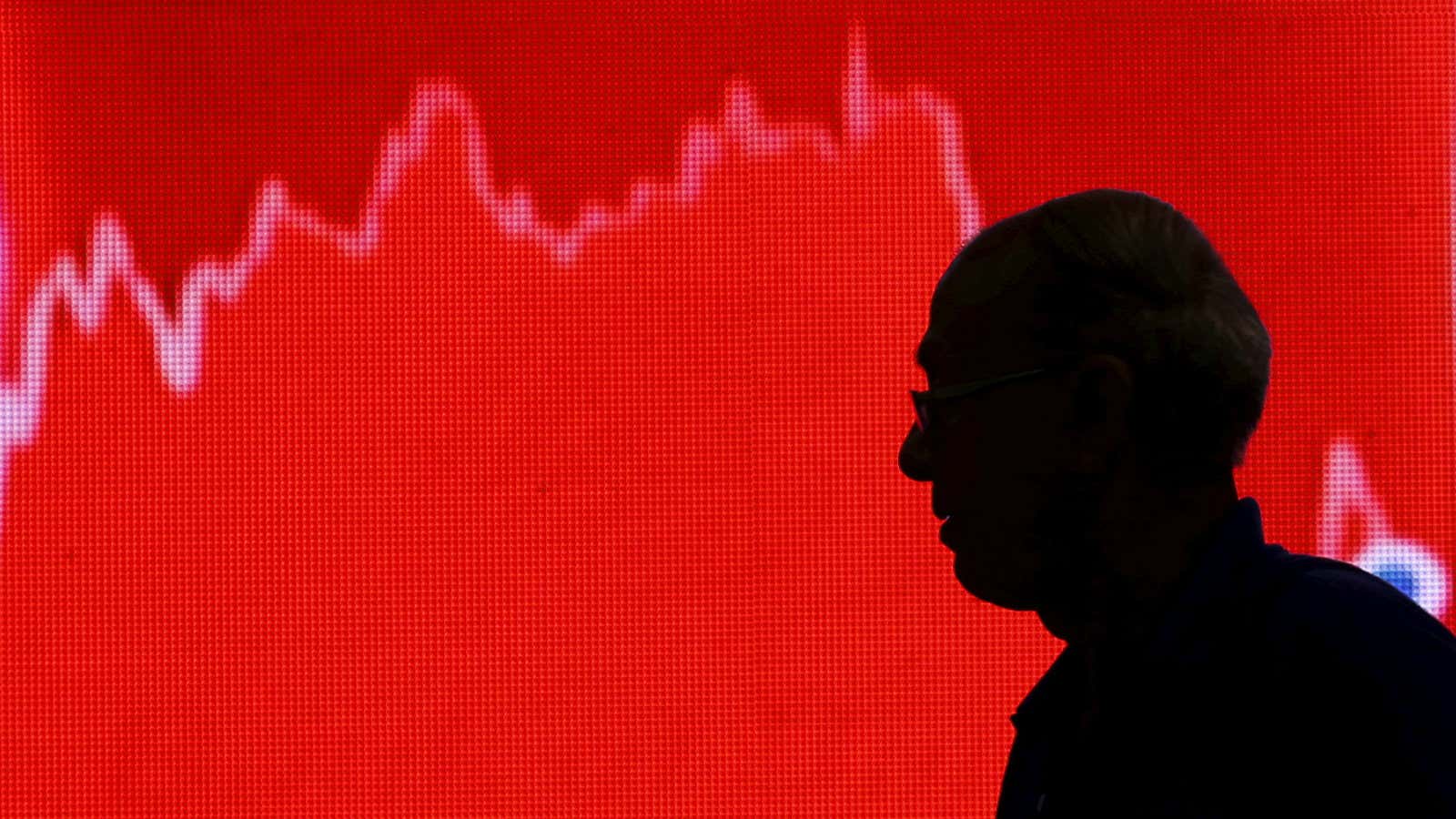What started as a jeering for Indian finance minister Arun Jaitley’s budget announcement of long-term capital gains tax (LTCG) on Friday afternoon on Feb. 02 has quickly spiralled into a free fall. Some $75 billion (Rs5 lakh crore) has been wiped out of the stocks listed on the Bombay Stock Exchange in just two trading sessions on Feb. 02 and Feb. 05, and, as it seems to be, there will be more blood on Dalal Street.
The Sensex fell by nearly another 1,000 points in early trade on Tuesday (Feb. 06). But not all of it was due to Jaitley’s new tax.
World markets, at large, are quaking and the epicentre is Wall Street. Investors and traders globally have been spooked by the worst fall in American stocks since August 2011. The Dow Jones index fell 1,175 points on Feb. 05, when US president Donald Trump’s nominee Jerome Powell took charge as the chairperson of the US Federal Reserve (Fed).
It was not really a thumbs down for the new Fed chair from Wall Street. The markets fell over 2% even when Ben Bernanke took over on Jan. 31, 2006, according to this CNBC report.
American traders are merely reacting to data that is coming out of the US. Wages are rising and inflation is looking to go beyond the Fed target, and that would only mean more interest rate hikes in the world’s largest economy. This would slow down, if not stall, fund flows to emerging markets through the rest of 2018. So, what is happening in India is just collateral damage in a global script.
Hong Kong-listed Chinese firms fell as much as 5.15% in morning trade on Tuesday, Japanese equity index fell as much as 5.4%, and the Australian market witnessed the worst day in 20 years. This is in reaction to the sell-off in the US a day earlier.
The bourses signal a sharper fall ahead as the Dow futures point to another 1200-point-plus slide when Wall Street re-opens for trade on Wednesday.
There are more factors at play dragging equity markets down around the world aside from the fear of higher interest rates in US. Money that moved into global equities, in the last leg of recent rally, came from a sell-off in bond markets. However, there are early signs that the trend may be reversing, as US benchmark bonds are available at a bargain despite the threat of rising inflation.
In India, the problem may be compounded as fatigue, inflation, higher interest rates, and uncertainty in the economy as well as fiscal policy point to the possibility of a deeper correction in stock markets. The Narendra Modi government’s latest budget has only worsened those fears, instead of allaying them.
Some would say Indian investors had it coming. But the warnings fell on deaf ears, as many investors, wet behind the ears, lathered up the hottest stocks. The flows from domestic institutional investors—who had led the rally in the last few months—also slowed down in January 2018. The Sensex surged a 1,000 points from 35,000 to past 36,000 points in eight sessions in mid-January, only to lose it all in just three sessions in early February.
